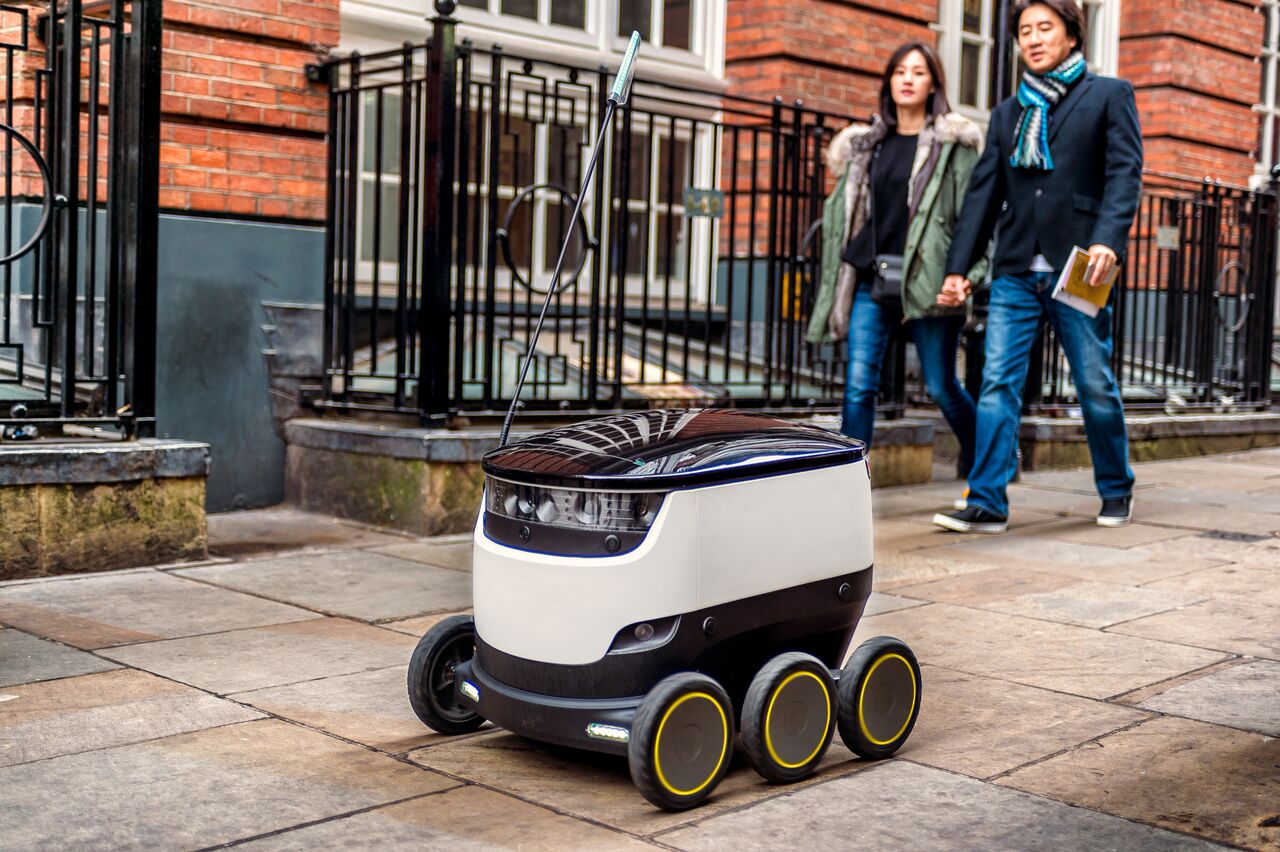Imagine: it’s a weekday morning in Columbia Heights and you’re trudging to the Green Line. On the sidewalk, there it is: an R2-D2 look alike, rumbling past on six rugged-looking wheels. It is tan-colored and about knee-height with a black lid. It navigates around obstacles like fire hydrants and pedestrians, is able to stop suddenly and uses the crosswalk on its own.
Science fiction? No, just another day in the nation’s capital. By the end of this month, autonomous food delivery bots will be operating on the streets of Washington, which has been selected by an Estonia-based startup to host the first U.S.-based delivery bot pilot program. The startup supplying the robots is Starship Technologies, formed in 2014 by Janus Friis and Ahti Heinla, two Skype cofounders.
The company chose D.C. because of its time zone proximity to Europe and its less-congested streets compared with other nearby options, said Starship spokesman Henry Harris-Burland. The company has a singular aim: to revolutionize the local delivery sector, bringing the cost of delivery to $1 or less.
How does it work?
Each robot is capable of carrying two grocery bags (or about 40 pounds) and can travel within a three-mile radius. It navigates by using nine cameras and a GPS to construct a 360-degree, 3D map of its surroundings. Starship says it can complete a delivery within five to thirty minutes and can do it at a price 10 to 15 times lower than other local delivery transport options. Although the bots are autonomous, operating on their own 99 percent of the time, there is always a remotely located operator on duty who can take over navigation or speak to passersby if any of the bots encounter issues.
Customers place their orders via an app, which they also use to track the progress and estimated arrival time of the bot. When an order is placed, the bot deploys from the hub it is stored at, heads to the restaurant from which the order was placed and carries the items to the customer. When the bot arrives, the customer uses a secret code from the app to unlock the lid.

The food bots are coming to D.C. (Courtesy photo)
Bots could put D.C. on the cutting edge of local delivery
The Starship bot technology comes in response to an emerging dilemma for many companies: figuring out how to reduce costs of home delivery in the age of online shopping. In the delivery sector it even has a name: the “last mile problem,” and it has prompted Amazon to experiment with aerial drone technology and “locker” pickup locations in cities.
The “last mile” is not necessarily one mile, but rather the final leg of a product’s delivery to the consumer — after it has reached a hub or port and must be distributed to various locations. It is the most expensive leg of the journey, comprising about 28 percent of the total cost of transport — and the most CO2-producing leg to boot.
What’s the catch?
An obvious issue is the possibility of vandalism or theft, a challenge that Harris-Burland, Starship’s manager of communications, says the company anticipates. Predicting that passersby will try to “ride them, steal them and tip them over,” the company has equipped each robot with an alarm, camera system and speaker to allow operators to warn would-be vandalizers that they are being recorded and that the police have been notified.
And another confidence-inspiring fact about the bots: so far, they have encountered 2.8 million people and covered 14,500 miles — all with no reported incidences of vandalism or theft. In fact, hundreds of trips are completed each day by the bots in England, Germany and Switzerland.
Still, the bots have yet to be tested in America, where last year a bot created by Canadian researchers as part of a social experiment was found destroyed in Philadelphia after having traveled for a full month without harm through Canada and parts of Europe. This has left some to wonder if the U.S. is a less hospitable environment for bots.
What’s the upshot?
If the program is successful in the U.S., Starship’s land bot program could add a valuable delivery solution to the mix here in the States — allowing the nation’s capital to help define the evolving landscape of local delivery.
Join our growing Slack community
Join 5,000 tech professionals and entrepreneurs in our community Slack today!
Donate to the Journalism Fund
Your support powers our independent journalism. Unlike most business-media outlets, we don’t have a paywall. Instead, we count on your personal and organizational contributions.

Mayor Bowser: Tech can help DC build a stronger, more self-sufficient economy

Comcast introduces ultra-low lag Xfinity internet that boosts experiences with Meta, NVIDIA and Valve

Maryland firms score $5M to manufacture everything from soup to nanofiber

